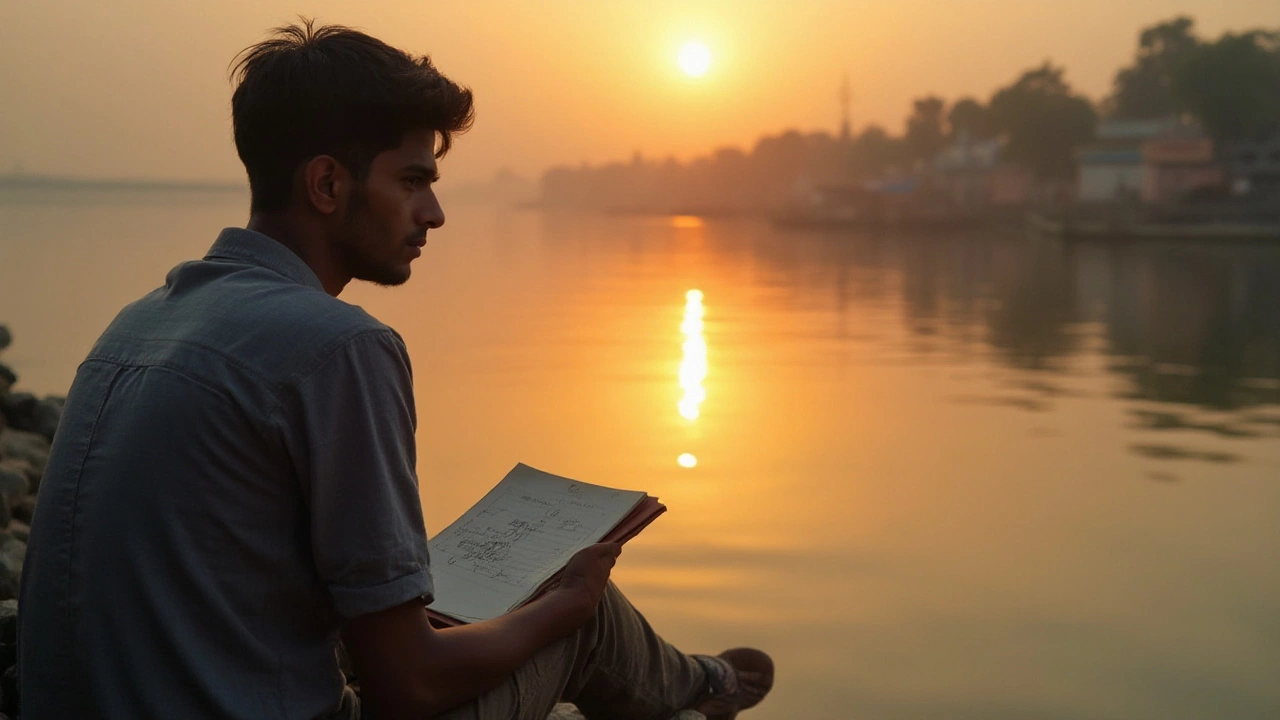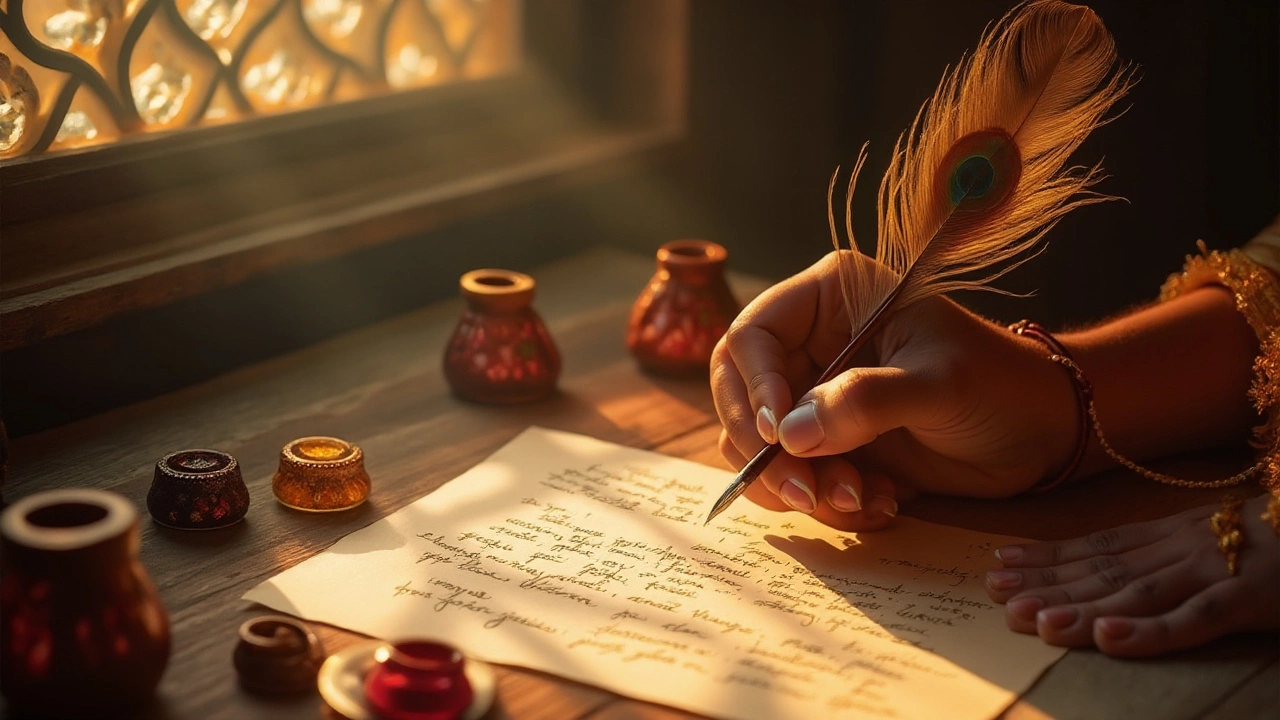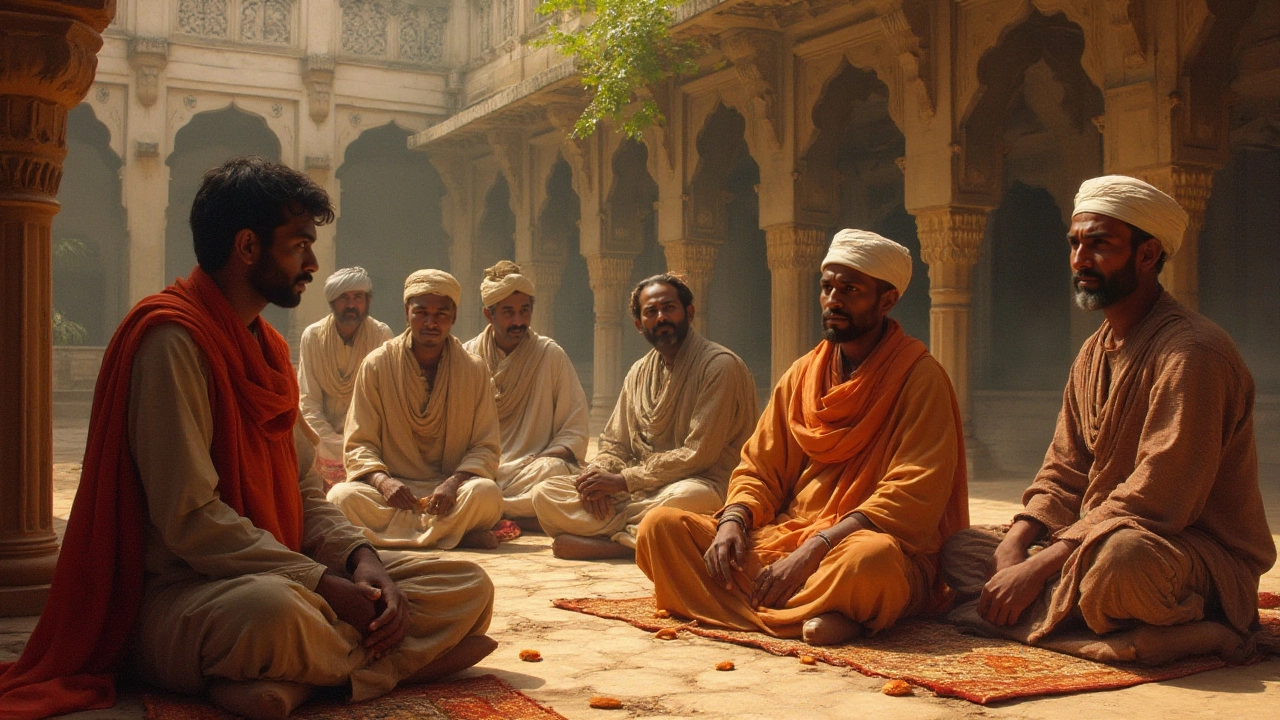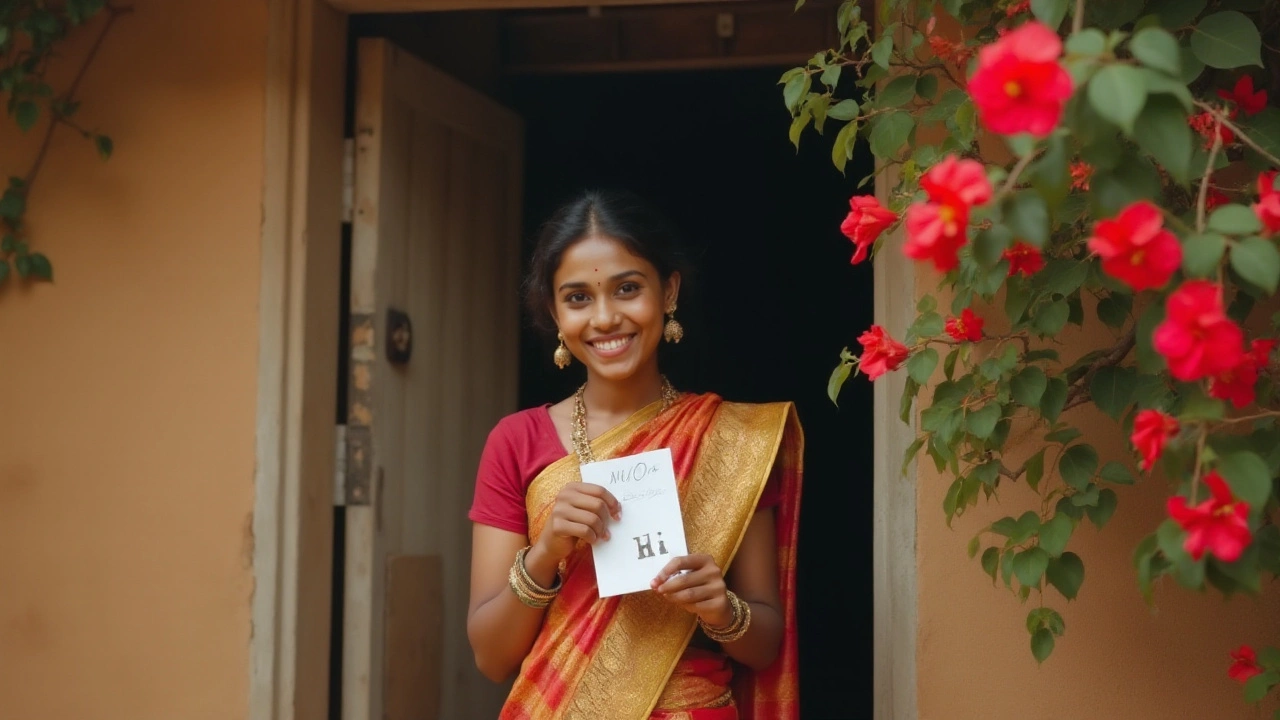
In the world of poetry, even the simplest words can hold profound meaning. A greeting as basic as 'hi' can transform into an echo of emotions, particularly within the delicate strands of sad Indian poetry. This exploration into creative salutations opens a window into a literary tradition where every word is chosen with careful intent.
Sad poetry in India holds a unique charm, reflecting a rich heritage of language and sentiment. This article invites you to delve into how poets weave their words, transforming a plain hello into an intricate expression of sorrow and reflection. Even in greeting, there's a tapestry of emotion, elegance, and depth, awaiting to be unraveled.
- The Power of a Simple 'Hi'
- Expressions in Indian Poetry
- Crafting Creative Greetings
- Tips for Poetic Salutations
The Power of a Simple 'Hi'
When we think about the word 'hi', it might seem insignificant at first glance. Yet, in the realm of sad poetry, this humble greeting takes on new dimensions. It becomes a portal, leading readers into a world enriched with emotion and nuanced meaning. In Indian poetry, where lexical economy is more than an art—it’s a necessity—a simple ‘hi’ can unfold into a narrative of emotion. This singular word acts as a window into the poet’s heart, suggesting tales of longing, loss, and the bittersweet nature of human connection.
Consider how famed poets like Gulzar have reshaped mundane words into harbingers of profound sentiment. The creative challenge lies in imbuing these greetings with depth that resonates with the soul. In Hindi and Urdu poetry, nuanced greetings can also serve as metaphors for unspoken feelings. This linguistic transformation requires a finely tuned appreciation of language and emotion. The intertwining of ‘hi’ with deeper themes in sad Indian poetry mirrors how these poets perceive and interact with the world around them.
"The essence of poetry is in saying the most with the least." — Robert Browning
The cultural connotations that come with greetings in Indian languages add another layer to their prowess. In a society where greetings often carry implicit emotional weight, poets leverage this to highlight sentiments not often spoken aloud. This subtlety can induce a profound effect, causing the reader to pause and reflect on the sadness enveloped in the everyday. Such deliberate use can shift the meaning of a simple 'hi' based on context, creating varied interpretations based on the reader's experiences.
A creative greeting has the ability not just to start conversations but to set a tone, one that reflects both the freshness of a beginning and the sadness that might linger beneath. It’s a testament to how artfully arranged words can touch the heart, stirring an emotional response that transcends literal interpretation. This section endeavors to unravel how a mere greeting, under the touch of a skilled poet, becomes imbued with life, age-old wisdom, and a reflection of the pathos so intrinsic to human existence.
In summary, the greeting ‘hi’ in sad poetry is not just a word but a symbol—a symbol of connection, a whispered solace, or even a prelude to parting. Its power lies in its duality, the way it can be both welcoming and tinged with sorrow, reflecting the multifaceted nature of life's experiences. Whether through personal expression or broader cultural storytelling, this simple word has earned its place in the intricate web of poetic discourse, reminding us of the beauty found in simplicity.

Expressions in Indian Poetry
When venturing into the realm of Indian poetry, one encounters a rich tapestry of emotions and expressions woven into the verses. Poets in India have long mastered the art of infusing even the simplest gestures, such as a greeting, with profound meaning. This transformation is due in part to the deep connections Indian poets often feel with their cultural heritage, one that values subtlety and layered nuances. Words are carefully chosen to evoke not just a mere sense of melancholy, but a deeper, resonant sorrow that speaks to the universal human experience.
In Indian poetry, greetings can act as a Trojan horse, bringing with them a range of emotions often hidden beneath the surface simplicity. Words that would typically pass unnoticed are imbued with new life, crafting a complex narrative of inner turmoil or solitude. For instance, the way a poet might express 'hi' in verses laden with sadness echoes not just a personal greeting, but an appeal to the cosmos, a whisper into the void. By doing so, these poems transcend their basic meaning, allowing readers to uncover layers upon layers of emotional depth. It becomes not only about communicating a greeting but using that greeting as a bridge to the unsaid, the unstated.
"The moon has left the sky, and I said hello to the night", writes Javed Akhtar, a reminder of how even a simple salutation can echo bittersweet longings in Indian poetry.This reflects the way poets utilize the power of their native language to paint vivid imagery even in dark, muted shades, appealing to a shared human sentimentality across cultures. In using these greetings within poetry, Indian poets capture the duality of life in a unique way, embedding sorrow in simplicity, inviting readers to pause and ponder over the smallest of salutations.
A fascinating aspect of Indian sad poetry is the synthesis of language and sentiment that allows the poets to express a wealth of emotion succinctly. Whether through Hindi, Urdu, Bengali, or other regional tongues, the linguistic flexibility and richness of these languages enable poets to mold greetings like 'hi' to fit their emotional palette precisely. It is this adaptability that has seen numerous masterpieces emerge, where a simple hello segues into an exploration of loneliness, reflection, or even unrequited love, drawing readers into a dialogue that extends beyond the mere utterance of a word.
In exploring these expressions, one can also note the use of symbolism often employed by poets. Nature plays a critical role, acting as a mirror for internal states, or a silent accomplice to the storytelling woven into the verses. The fleeting interaction of natural elements such as the setting sun or falling leaves often parallels the brevity and depth of the simple greetings tucked within folds of emotional resonance. By doing so, Indian sad poetry finds its voice, leaving the reader with an enriched understanding of how such expressions are shaped by tradition yet speak directly to our shared humanity in unprecedented ways.

Crafting Creative Greetings
In the intricate world of Indian poetry, crafting greetings that convey deep emotion begins with an intimate understanding of the cultural nuance and the poetic techniques that resonate with readers. A greeting, while just a word or phrase, can be transformed into a meaningful line that sets the tone for a poetic piece, evoking emotions that linger long after the words have been read. The art of saying 'hi' is both a simple and profound undertaking, where poets interlace rhythm, meter, and symbolism to transform ordinary salutations into extraordinary expressions of human condition.
One of the renowned methods poets use involves personification, where inanimate greetings take on human attributes to create more depth in their message. This technique allows the simple 'hi' to become a living, breathing entity, reflecting the fluctuating emotions within a heart full of longing or sadness. For instance, Rabindranath Tagore, a pivotal figure in Indian literature, often used this technique to infuse his greetings with emotion, crafting introductions that are both poignant and immersive. His works illuminate the beauty of sorrowful greetings, offering glimpses into the soul through his elegant use of language.
Moreover, imagery plays a critical role in shaping greetings within sad poetry. By painting vivid pictures with words, poets convey the emotional landscape surrounding their greetings. This fosters a stronger connection between the reader and the poet, allowing the sorrow to be felt more intensely. Consider the mesmerizing landscapes depicted in the works of Mirza Ghalib, who masterfully used imagery to transport readers into the heart of his emotional narratives. His greetings often served as a gateway into a richly visual world where every 'hi' was a brushstroke on the canvas of despair and longing.
"Poetry is when an emotion has found its thought and the thought has found words." – Robert Frost
Yet, beyond literary techniques, crafting the perfect greeting also requires authenticity. A genuine sentiment can turn a simple greeting into a vehicle for profound empathy and understanding. Poets often delve into their own experiences, drawing from personal sorrow and longing to infuse their greetings with authenticity. This transparency invites readers on a journey, often mirroring their emotions and providing solace through shared humanity. It’s in this sharing that the simple act of saying 'hi' becomes a gesture of deep connection.
For those looking to craft their own unique greetings within Indian poetry, it is vital to embrace these elements—personification, imagery, and authenticity—while honoring the language and rhythm distinctive to India's literary tradition. Balancing these components carefully helps in crafting greetings that not only begin a poetic narrative but also echo the delicate balance of sadness and beauty found within human experiences. This alchemy of words transforms a greeting into a profound reflection of the soul, allowing the reader to hear the unsaid, feel the unseen, and understand the unspoken.

Tips for Poetic Salutations
Crafting a poetic salutation is an art that can infuse a touch of elegance and emotion into your everyday interactions. Delving into the intricacies of sad Indian poetry, you'll find a myriad of ways that poets have historically elevated simple greetings into poignant expressions. To begin with, one must appreciate the power of words and their ability to evoke feelings. A poetic salutation is not just about the words but the emotions and intent behind them. Your aim should be to connect deeply, whether the greeting is whispered or written. When you say 'hi', imagine it like a delicate brushstroke on the canvas of conversation, setting the tone for what follows.
One effective technique is drawing inspiration from nature, a theme deeply rooted in Indian poetry. Nature symbolizes various emotions, and comparing a greeting to a gentle breeze or a setting sun can evoke a poignant image. For instance, describing a 'hi' as gentle as the first raindrop of monsoon delicately touches the heart, connects the greeting with the anticipation and earthiness unique to Indian culture. In another scenario, consider an analogy with a swaying lotus in a calm pond, representing resilience and peace, which often lies beneath the layers of human melancholy. Rooting your greetings in tangible images enriches the poetic quality of your salutation.
"In the realm of language, clarity is not the enemy of beauty. With clarity comes the space for beauty to breathe." – Vikram Seth
Another tip is to employ literary devices like alliteration and rhythm, which add a musical quality to your greetings. Alliteration emphasizes specific sounds and can increase the emotional effect, as observed in phrases like 'whispering winds wonder' or 'silken sighs'. These play a melodious role in sad poetry, creating an atmosphere that enhances the underlying sentiment of the salutation. Moreover, implementing rhythm provides a lyrical quality to even the gentlest 'hi'. When you can feel the rhythm not only in hearing but in the heartbeat of the text, it creates an intangible connection, reminiscent of a soothing lullaby.
The choice of words is critical in unfolding layers of emotion. Opt for words that hold multiple meanings or convey subtle connotations. Employ words that not only denote a greeting but suggest something deeper. A simple 'hi' can turn into a meaningful gesture when framed with metaphors or cultural references. For example, consider greeting someone like a 'distant star shimmering across the twilight sky'—it carries an invitation for introspection, weaving in the expansive loneliness often explored in sad poetry. Through such curated choices, the salutation becomes a doorway to further conversation, charged with emotional energy.
Bringing It All Together
While crafting a poetically enriched greeting, remember to let your personal voice shine through. The authenticity of your expression is not just in the choice of words but in the sincerity of delivery. Consider writing a greeting note before it is spoken, allowing you to polish it like a precious gem. Practice various iterations to see which resonates with the intended sentiment. When your words stem from genuine emotion, whether penned or verbalized, they resonate with a timeless quality, reminiscent of age-old Indian poetry. Ultimately, remember that in the world of poetic salutations, it's not solely about mastering the words but rather the ability to touch hearts with grace and empathy.